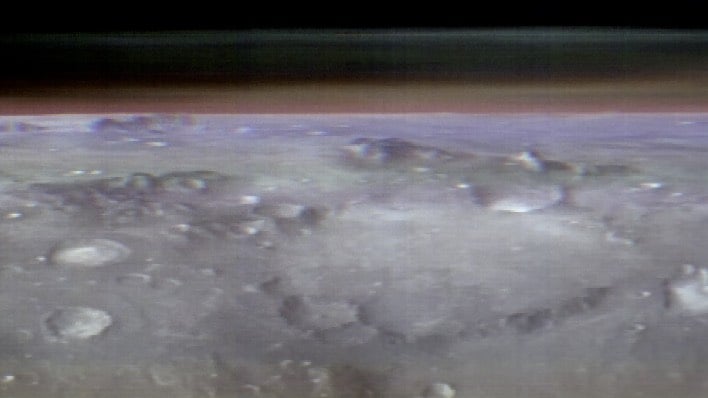NASA’s Odyssey Orbiter Captures Astonishing Images Of Horizon On Mars

NASA engineers spent three months preparing for the operation that used the THEMIS camera onboard the Odyssey orbiter, which just completed its 22nd year at the Red Planet. According to NASA, the orbiter captured the images in May of this year from an altitude of about 250 miles (400 kilometers), the same altitude the International Space Station (ISS) orbits the Earth.
“If there were astronauts in orbit over Mars, this is the perspective they would have,” remarked Jonathon Hill of Arizona State University and operations leader for Odyssey’s camera known as the Thermal Emission Imaging System (THEMIS). “No Mars spacecraft has ever had this kind of view before.”
“I think of it as viewing a cross-section, a slice through the atmosphere,” explained Jeffrey Plaut, Odyssey’s project scientist at JPL. “There’s a lot of detail you can’t see from above, which is how THEMIS normally makes these measurements.”
Because of having to rotate Odyssey nearly 90 degrees while ensuring the Sun would still shine on the spacecraft’s solar panels but not on sensitive equipment, the team decided to make the most of the opportunity. The mission also included capturing Mars’ moon Phobos from a different angle than captured previously. The new imagery provided scientists with insights into the composition and physical properties of the moon.
“We got a different angle and lighting conditions of Phobos than we’re used to,” remarked Hill. “That makes it a unique part of our Phobos dataset.”
The Mars Odyssey orbiter arrived at Mars in 2001 and has been used to create a global map of the many chemical elements and minerals that make up the Martian surface. Images captured by the orbiter, such as the most recent of the Martian horizon, will be helpful to scientists and those working on both Odyssey and the Mars Moon eXplorer mission.

